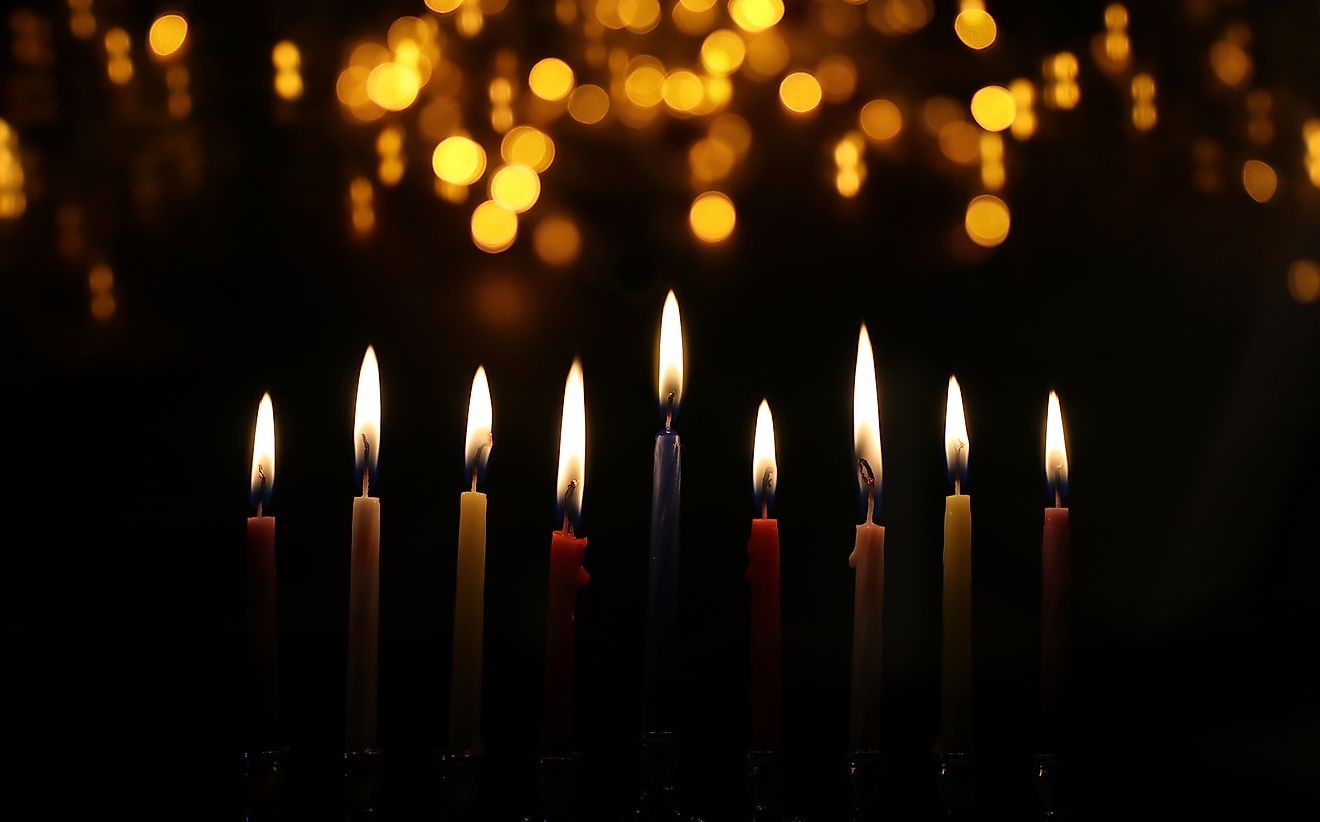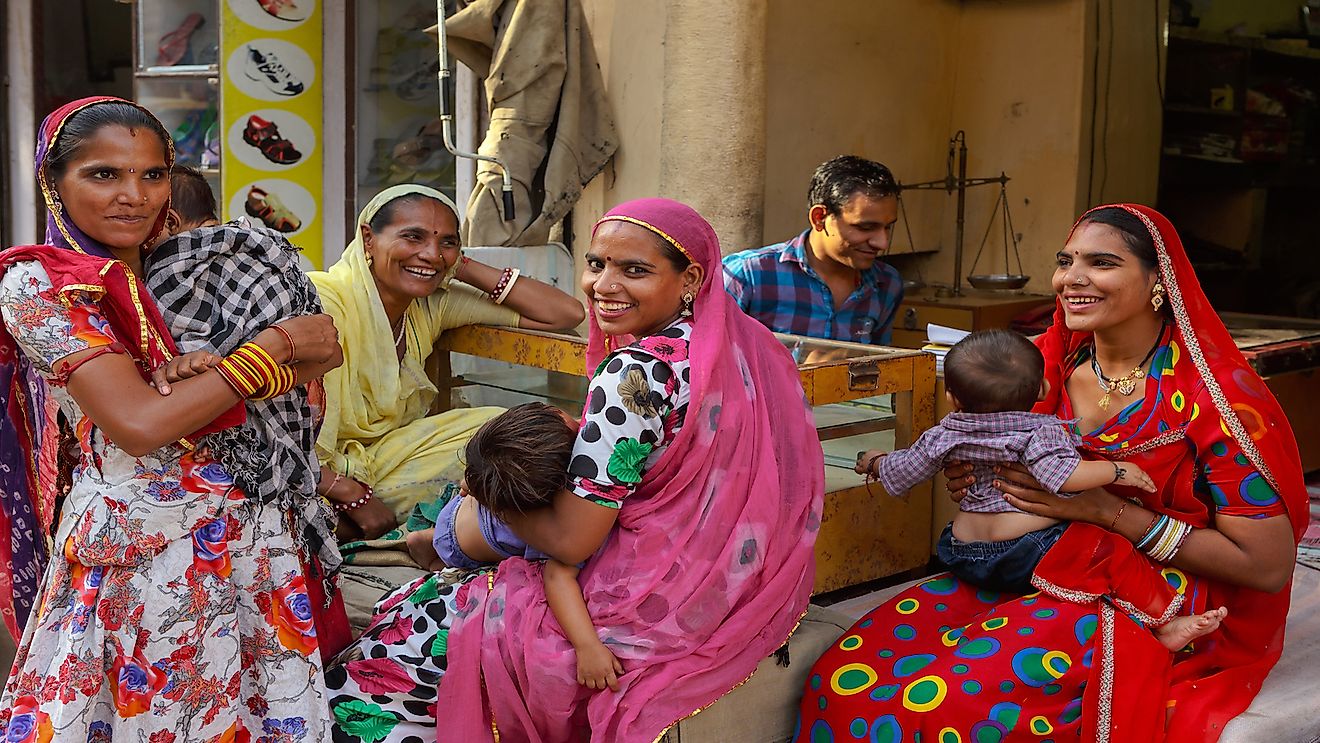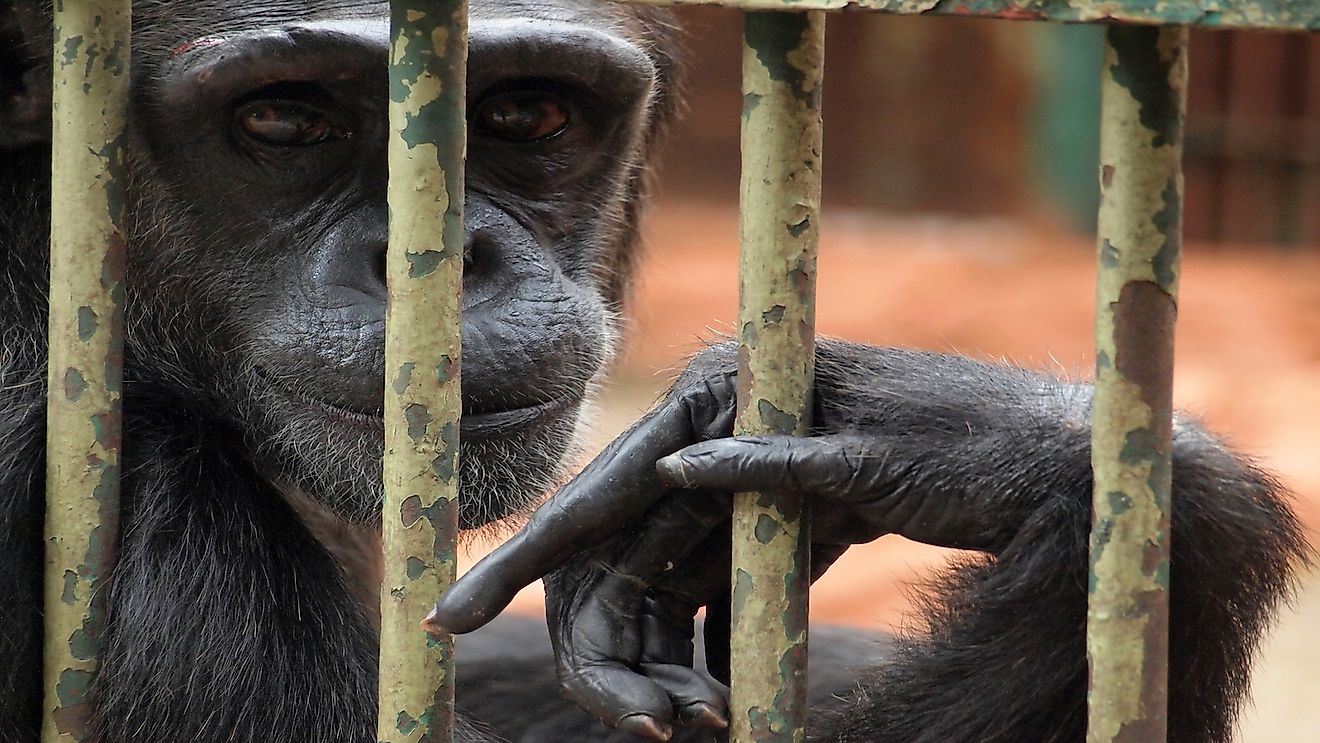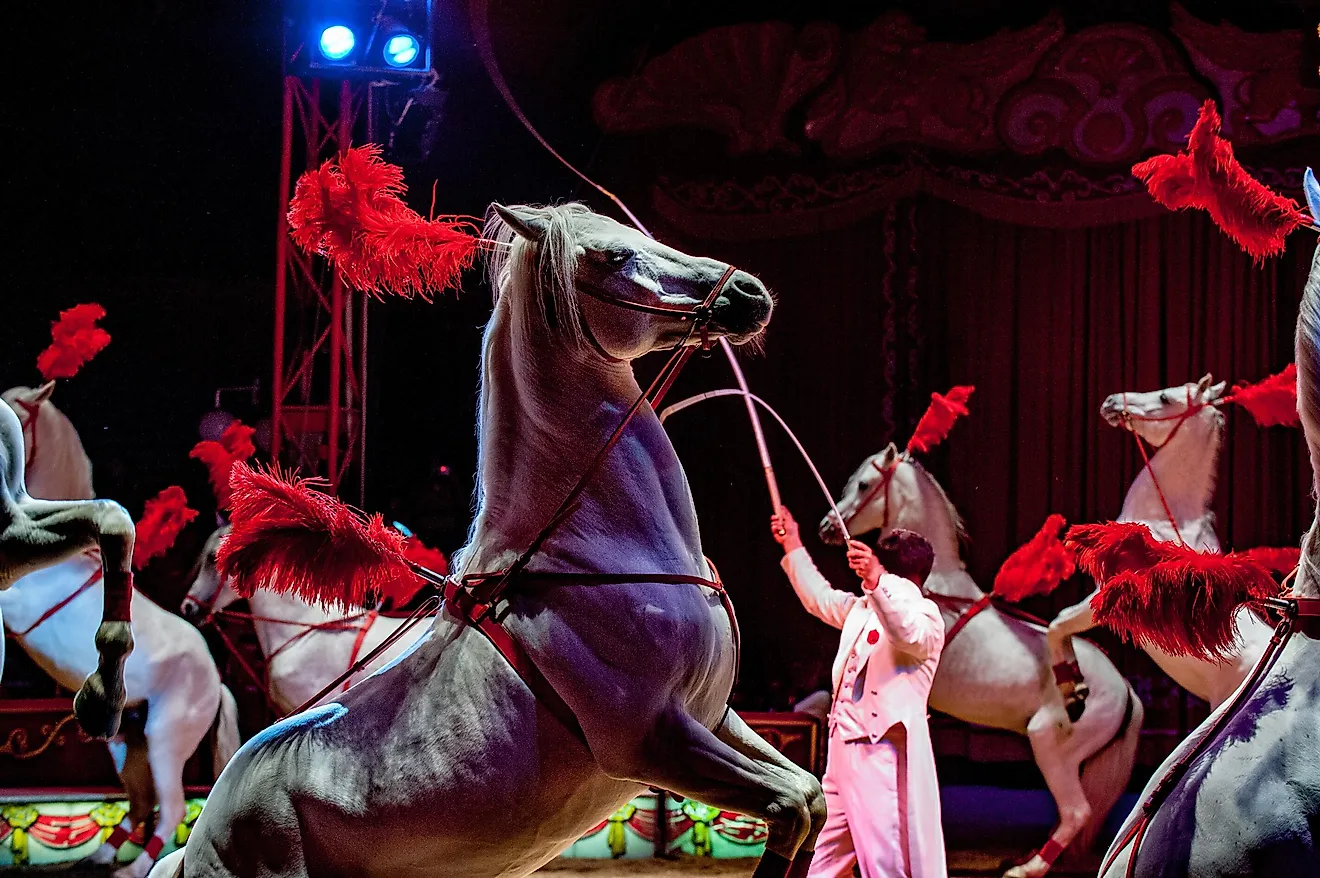The Origins Behind 6 Hannukah Traditions

Hanukkah, also known as the Festival of Lights, celebrates and commemorates the miracle of lights and is always celebrated on the 25th day of the third month (Kislev). The name Hanukkah comes from the Hebrew verb “chanak” which means “to dedicate”, in honor of the rededication of the temple in Jerusalem. The story of the rededication of the temple is told in the books of First and Second Maccabees (part of the Catholic and Orthodox canonical Bibles), and the story of the miracle of how one day’s ritual oil supply lasted for eight days is described in the Talmud.
During this time, the Jews were occupied and Antiochius had ordered an altar to Zeus be placed in the Temple. If that weren’t enough, he also ordered pigs be sacrificed at the altar. In response, the people revolted and within two years, the occupation was over and the temple purged of the Greeks. In order to rededicate the temple, the oil menorah needed to be kept lit, however there was not enough oil to do so. The miracle is that the single day’s supply lasted for eight full days, which was long enough for new oil to be pressed and ritually prepared for use. To honor the miracle, the Israelites made a vow that the eight days would be observed of “joy and honour”. In the Christian Scriptures, the book of John references the “Festival of Dedication” and Jesus’ presence at the temple to celebrate it.
There is another interpretation of the Hanukkah story, which posits that the reason for the fighting was a conflict between Hellenized Jews and traditional Jews, and that in the end, the traditionalists won and were able to establish an independent Jewish kingdom which lasted for more than a hundred years.
Finally, there is some disagreement over whether or not the miracle of the oil truly occurred. The miracle has been questioned — and even regarded as a legend — since the middle ages. However, most Orthodox branches of Judaism believe that the miracle was a historical event. Although in modern times the celebration of Hanukkah has become very large (due in part to its alignment with other winter light festivals, including Solstice and Christmas), Hanukkah itself is not a prominent religious holiday within the Jewish calendar. There are other more prominent high holy days, such as Rosh Hashanah and Passover.
Hannukah Traditions
The Menorah
The most well-known tradition connected to Hanukkah is the lighting of the menorah, also known as the hanukiah. The menorah is a nine-branched candle holder: eight of the branches commemorate the nights that the candles were lit in the temple, and the ninth branch, called the shamash (helper) is for the candle that is used to lit the candles each evening after sunset. The shamash usually has a position that is offset from the eight main candles, either higher or lower. On the first night of Hanukkah, one candle is lit and every night an additional candle is lit, until the final evening, when the entire menorah shines bright. There are several ways of celebrating this component, depending on what type of Judaism you practice. Some homes have one menorah for the entire household, whereas other homes have a menorah for each family member. The menorah is lit specifically to help remember and commemorate the miracle of the oil, rather than to light the physical space. Often, the menorah is placed in a window or another area where passersby can see it and think of the miracle of God’s providence and blessing.
Many light the menorah as the sun goes down, and custom dictates that the lights burn for at least thirty minutes after sundown. There are two blessings that are usually said over the lights, one for the lighting of the candles, and the other, for the miracle of Hanukkah.
Hannukah Gelt
Hanukkah gelt is either money as a gift given during Hanukkah, or more frequently, coin-shaped chocolate. Gelt is a Yiddish word for money, and the origin of this tradition goes back to ancient times, when the Maccabees won their independence from Antiochus. The coins that they minted were stamped with an image of the menorah. The practice of giving gelt during Hanukkah, is more modern and originates in the 18th century, when religious teachers would be given a monetary gift of thanks around the time of Hanukkah. The idea was to express gratitude for education and the gift of teaching. Eventually the coins were given to children, in the hopes that it would also encourage them to study their faith more. Most of today’s children receive chocolate gelt, which is often used to make bets when spinning the dreidel, however actual money gifts are sometimes given. When this occurs, children are often encouraged to use some of that money as a donation, in an act of tzedakah.
Playing Spin the Driedel
The dreidel is a four-sided top and each side has a Hebrew letter written on it: Nun, Gimmel, Hay, and Shin. Together, the letters stand for the phrase “A great miracle happened there” which refers to the miracle of the oil. To play the game, players bet their chocolate gelt and either win or lose pieces, based on where the top lands. The origin of the game lies in a legend of how during the original occupation of Antiochus, children were forbidden from studying the Torah, and so they would pull out the tops and hide their books whenever Greek officials approached them, feigning at play. There are also explanations that are numerological that have been worked out (the sum of the numerical values of the letters on the four sides is 358 which is also the sum of the letters that spell out the Hebrew word for Messiah)
Eating Fried Foods
Because Hanukkah celebrates the miracle of the oil, many of the foods that are associated with the eight day celebration are fried foods. Most commonly known are sufganiyot and latkes. Latkes are pancakes made out of potatoes and onions and served with applesauce. They are easy to make at home and are a classic fried dish. Sufganiyot are fried jelly donuts and on the other hand, are not easy to perfect. The Histadrut, a trade union founded in 1920 to organize the economic actions of the Jewish workers, was foundational in promoting the sufganiyot as a Hanukkah treat. Many Jewish holy days are concentrated in the fall, and the sufganiyot provided for the creation of more jobs during a time that had less religious requirements. Blintzes (sweet cheese-filled fried pancakes) are another common favorite food during Hanukkah.
Exchanging Gifts
The exchanging of gifts during Hanukkah celebration really became prominent during the 20th century, with the westernization of the holiday and the further commodification of Christmas and Hanukkah. Prior to this time, gift exchange was not a feature of the festival. Some families give gifts every night, with the gifts becoming larger or more significant as the days pass, others only give one gift at the end. The traditions are as varied as there are families celebrating the holiday. Often, gelt is given on the first evening so that it can be used to play dreidel in the coming days.
Eating Cheese and Other Dairy Products
This final tradition might not be as well known, however eating dairy products during Hanukkah is a common occurrence to commemorate Judith and her slaying of Holofernes. Rabbinic records speak to this tradition and its honoring of Judith’s heroism. Judith was a widow who saved her town by her actions. Holofernes was an Assyrian general and he had surrounded the town. He would taunt the Jews every night from outside the city walls. Judith pulled out her finest clothes and after bathing and perfuming herself, left the city, went to the camp and met with Holofernes. He was besotted with her and thought he would have her that evening. She fed him cheese until he was thirsty, and then wine, until he was drunk and passed out. After he passed out, Judith cut his head off with his sword, and smuggled it back to Bethulia in a basket. The next morning, when the Assyrians awoke, they found the head of their general, displayed on the walls for them to see. The Assyrians fled and the people were saved. Judith’s story reminds us that women also played an important role in the Hanukkah story.
Overall, the celebration of Hanukkah, like many religious festivals, is full of meaning-filled traditions that honor and celebrate the event it commemorates.











